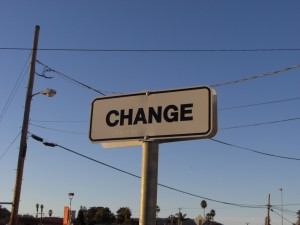
Guidelines remain unclear on when a patient’s treatment should be changed if they are unresponsive to a recently prescribed antipsychotic. There is also a lack of consensus on whether early signs of improvement can be used by clinicians to predict a patient’s later response.
Early theories suggested that the onset of antipsychotic drug action can be delayed and the identification of non-response can be deferred. This has since been challenged by evidence that a reduction in symptoms can be evident during the first weeks of treatment. Guidelines on the time allocated for patients to show an initial response has ranged from two to four weeks (American Psychiatric Association) and four to six weeks (NICE) at optimum dose. The definition of early improvement also remains uncertain, with previous studies including varying degrees of reduction in the total score on the Positive and Negative Syndrome Scale (PANSS), including less than/equal to reductions ranging from 20% to 50%.
In this review (Samara et al, 2015) the authors investigated whether a lack of improvement after two weeks of treatment with an antipsychotic can be used to predict later non-response by conducting a diagnostic test review. The aim of the test is to identify non-responders and change their treatment as early as possible, to avoid the continuing use of antipsychotics which have little or no benefit.

Current guidelines disagree as to how long it takes for patients to respond to antipsychotics.
Methods
This review was designed to compare an index test (a predefined degree of non-improvement following two weeks of treatment) against a reference standard (non-response to antipsychotic treatment) at a later stage:
- The suggested index test for lack of improvement in symptoms after two weeks was a less than 20% reduction of the total PANSS or Brief Psychiatric Rating Scale (BPRS) total score.
- The proposed reference standard for nonresponse at endpoint/follow-up was a less than 50% reduction of the PANSS or BPRS total score from baseline to endpoint (equivalent to ‘much improvement’ on the clinical global impression scale).
The authors included any studies that examined response to antipsychotic treatment at follow-up by the degree of improvement in overall symptoms using either the PANSS or BPRS total scores. The follow-up times varied from 4 to 12 weeks, and studies were included irrespective of study design, setting or blinding method (only studies where the antipsychotic was administered orally were included). Participants had a diagnosis of schizophrenia, schizophreniform or schizoaffective disorder with no age, gender, ethnicity or setting restrictions.
The authors searched electronic databases including EMBASE, MEDLINE, BIOSIS, PsycINFO, the Cochrane Library and CINAHL. Searches of ClinicalTrials.gov and the International Clinical Trials Registry Platform were conducted and study authors were contacted for individual patient data.
Two authors independently selected studies and extracted data using a standardized form. Methodological quality was determined using the Quality Assessment of Diagnostic Accuracy Studies–2 (QUADAS-2) and a random-effects meta-analysis was performed.

Predicting treatment response is possible with carefully conducted research and not a crystal ball in sight.
Results
The search identified 2,224 records and 34 studies were included in the review (9,460 participants in total). Individual patient data for 32 of these studies were obtained by contacting study authors.
The results were calculated based on:
- Sensitivity: probability a non-responder will also be rated as not improved at two weeks
- Specificity: probability a responder will also be rated as improved at two weeks
- Positive predictive value (PPV): probability a patient rated non-improved after two weeks will be a non-responder at endpoint; and
- Negative predictive value (NPV): probability a patient rated as improved after two weeks will be as a responder at endpoint.
The authors identified specificity and PPV as the most clinically important results when assessing non-response:
- Does a less than 20% PANSS or BPRS reduction at two weeks predict a less than 50% reduction using the same scales at endpoint? The diagnostic test supported this hypothesis (specificity 86%, PPV 90%, sensitivity 63% and NPV 53%) with no substantial changes following a sensitivity analysis
- Remission at endpoint was predicted with this test (specificity 77%, PPV 88%, sensitivity 61% and NPV 42%)
- A less than 20% PANSS or BPRS reduction at endpoint was predicted using this test (specificity 70%, PPV 55%, sensitivity 85% and NPV 91%).
Factors which didn’t influence effects included gender, study design, blinding, class of antipsychotic, dosing schedule and sponsorship.
Test predictions
The test predicted that for 100 patients showing non-improvement after two weeks (defined as less than 20% PANSS or BPRS score reduction):
- 90 will not display ‘much improvement’ at endpoint (less than 50% PANSS or BPRS score reduction)
- 88 will not achieve symptom remission at endpoint
- 55 will not achieve minimal improvement at endpoint (less than 20% PANSS or BPRS score reduction).

This diagnostic test review suggests that patients who don’t improve after 2 weeks of antipsychotic treatment are unlikely to respond later and may benefit from a different treatment.
Discussion
The results lend support to the hypothesis that non-improvement following two weeks of treatment with antipsychotics can predict non-response at a later time in patients with schizophrenia spectrum disorders.
The authors identified a number of important factors that require consideration in the formulation of the test including:
- An endpoint non-response assessment at four weeks provides a higher specificity result than at six weeks (93% at week 4 and 82% at week 6) (p<0.0005)
- A greater severity of illness at baseline produces a higher specificity for the diagnostic test (p<0.0001)
- A shorter duration of illness results in higher test specificity (p<0.04)
The use of individual patient data was beneficial for this review. However, the authors identified several limitations:
- Only four antipsychotics were analysed (Amisulpride, Haloperidol, Olanzapine and Risperidone). Although they share similarities with other drug profiles, additional studies involving other antipsychotics are required
- The participants were mostly chronically ill patients, and different response rates have been noted for first episode and treatment-resistant patients
- Patients must receive antipsychotics at a sufficiently high dose before non-response is established, and the proposed test should only apply to patients receiving the target dose for two weeks beforehand
- The authors acknowledge that their results do not explore alternative treatment strategies in cases of non-response, and that limited evidence is currently available on the benefits of switching antipsychotics or increasing the dose.
This study provides valuable evidence to support definitions of early improvement and the association with later response, but further research is required. In combination with the findings of the current SWITCH and OPTIMISE studies on effective treatment strategies in cases of non-response, this study will aid the development of recommendations for use in clinical practice.

Studies of different types of antipsychotics and a wider variety of patients are required to inform the development of future practice guidance.
Links
Primary paper
Samara MT, Leucht C, Leeflang MM, … Leucht S. et al (2015) Early Improvement as a Predictor of Later Response to Antipsychotics in Schizophrenia: A Diagnostic Test Review. The American Journal of Psychiatry, 172 (7), 617–29. [PubMed abstract]
Photo credits:

Can early improvement be used to predict later response to antipsychotics in… https://t.co/K2eNQbYdrT #MentalHealth https://t.co/4HgXkS6C4E
This is fair enough science, but the real question I’m interested in is ‘can we identify that improvement at 2 weeks clinically?’
We don’t do PANSS/BPRS on the wards routinely and they’d only be experienter biased if we did.
A second point is, with a sensitivity of 63% and NPV of 53%, we must remember to keep reviewing the effectiveness of APs past two weeks, even if they seem to have initially worked. Perhaps it’s natural variation in symptoms, or placebo effect, or initial side effects masquerading as improvement, but the initial benefit seems to fade for many.
Thanks for your comments Alex.
The authors have attempted to make their findings clinically relevant by linking the PANSS/BPRS results to the more widely used Clinical Global Impressions scale (CGI). They note that a less than 20% reduction of total PANSS score from baseline to two weeks is equivalent to a less than minimal improvement on CGI. A less than 50% reduction of PANSS total score from baseline to endpoint is also noted as corresponding to a CGI rating of much improved.
You are right that the paper doesn’t address reviewing the effectiveness of antipsychotics for patients perceived to have responded to treatment. The evidence presented only suggests the benefits of non-response assessment after four weeks due to a high specificity score (93%) compared to assessment at six weeks (82%).
Today @tracey107uk on early improvement as a predictor of later response to #antipsychotics in #schizophrenia https://t.co/fGNflKnP6v
Early improvement be used to predict later response to antipsychotics in schizophrenia https://t.co/T5t05bwRys
Can early improvement be used to predict later response to #antipsychotics in #schizophrenia? https://t.co/N9oB4bhP4D
Can early improvement be used to predict later response to antipsychotics in schizophrenia? https://t.co/UIdihd1sD7 via @sharethis
@Mental_Elf thanks for sharing – it’s a shame authors didn’t suggest why early response is important…
@StavrosOrfanos @Mental_Elf the authors want to avoid patients taking antipsychotics in the long-term that are unlikely to help them
@traceystweets01 @Mental_Elf Yes- but understanding factors (possibly non-specific) linked to outcomes would reduce unnecessary drug use!
Don’t miss: Can early improvement be used to predict later response to antipsychotics in schizophrenia? https://t.co/fGNflKFpY3 #EBP
Alex appears to defend not doing the PANSS or BPRS on his ward because he believes the results will be biased. So how does he measure change in his patients (e.g. improvement or deterioration) in a way that is unbiased?
Also, the author of this article should probably acknowledge that one of the authors of the article she reviewed (S Leucht) is a Cochrane Schizophrenia Group Editor – who presumably she works with/for.